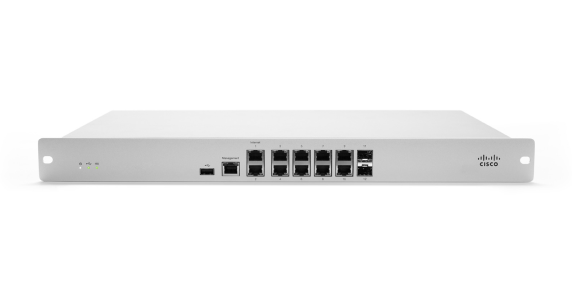
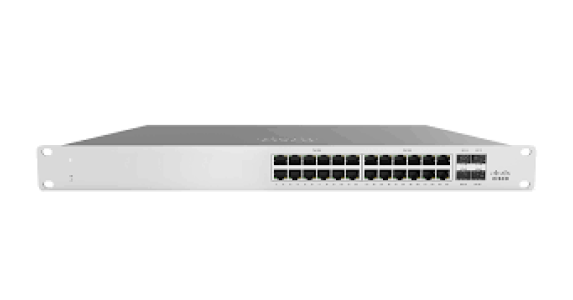
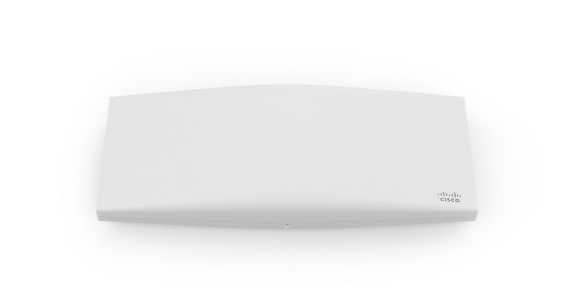


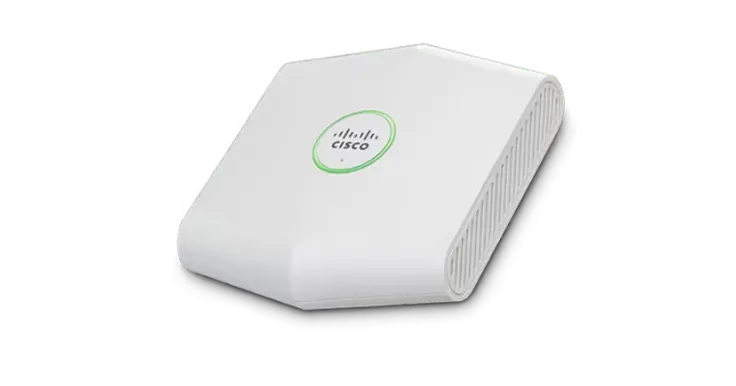

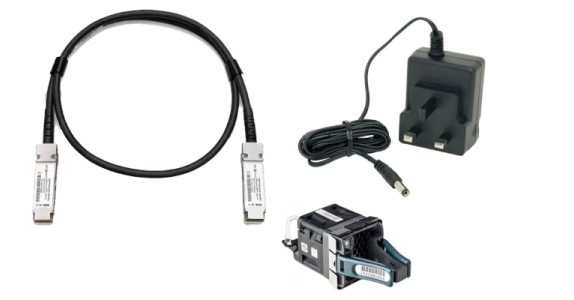
A Meraki MG cellular gateway gives you reliable internet anywhere a wired circuit is slow, costly, or unavailable. Mount the device where signal is strongest, hand off Ethernet to your WAN port, and manage it all in the Meraki cloud. Deploy a Meraki cellular gateway as a primary link for new sites, as instant failover for SD-WAN, or for pop-up locations that need secure connectivity today. The design is simple. The result is less downtime and faster turn-ups.
Performance scales with your needs. Current Meraki MG models span LTE, 5G, and 5G Standalone to support low latency applications and higher throughput. E variants accept external antennas to overcome tough RF conditions. Centralized monitoring shows signal quality, carrier health, and usage in one dashboard. You can push templates to standardize settings, automate with APIs, and receive alerts before users feel an impact.
A Meraki cellular gateway fits cleanly into mixed environments. It pairs naturally with Meraki MX for SD-WAN but plays well with third-party firewalls too. Because the handoff is Ethernet, your security stack remains in control of policies and inspection. Your net gain is predictable performance without added complexity.
Need help with carrier validation, antenna choice, or rollout planning across many addresses? Stratus Information Systems can size, quote, and stage your Meraki MG deployments for a smooth day-one experience.
A Meraki MG cellular gateway converts a mobile network signal into a standard Ethernet handoff for your router, firewall, or switch. You place the device where cellular signal is strongest, then connect it back to your network over copper or fiber. The gateway handles SIM activation, carrier registration, and signal optimization while the Meraki dashboard provides configuration, monitoring, and alerting. Because it lives at the edge and hands off Ethernet, it is vendor-agnostic at Layer 3 and works especially well with Meraki MX and SD-WAN. In short, a Meraki MG gives you primary or backup internet without waiting on a wired circuit.
Select an E model when your site needs more control over RF performance. Warehouses, healthcare campuses, stadiums, and sealed equipment rooms often sit in weak-signal zones. With a Meraki MG E variant, you can run low-loss cable to a roof or window and attach higher-gain or directional antennas to capture a cleaner signal. This improves throughput and stability, especially during peak network loads. It also gives you flexibility if the carrier advises a different tower azimuth or band plan later. If your signal is already strong at the install point, a standard Meraki MG can be the simpler and more economical choice.
5G Standalone, supported by the newest Meraki MG models like the MG52 and MG52E, uses a dedicated 5G core. This can reduce latency and improve reliability as carriers expand SA coverage. Non-standalone 5G relies on parts of the 4G core, which is widely deployed and delivers strong real-world speeds, especially with carrier aggregation. If your sites sit in areas with active 5G SA, the latest Meraki cellular gateway models can tap that capability and prepare your network for future enhancements. If SA coverage is limited, a Meraki MG with LTE or non-SA 5G still provides excellent uptime and performance for most branches.
Connect the MG’s Ethernet handoff to an available WAN port on your Meraki MX. In the dashboard, configure cellular as primary, secondary, or a performance-based path within SD-WAN policies. You can prefer the wired circuit for large transfers and keep the Meraki MG as an instant failover. Or you can run active-active, where application classes use the link that best fits their needs. Health probes and performance stats from both devices appear in the Meraki dashboard, so your team can see latency, loss, and jitter in one place. The result is predictable uptime with simple, policy-driven control.
Treat placement as the main design decision. Start with a quick site survey, then mount the gateway near windows, exterior walls, or rooftops where signal quality is higher. Keep cable runs within recommended limits, or select an E variant to place antennas outdoors while the device stays inside. Most Meraki MG models support PoE, which simplifies power and reduces the need for local outlets. Use shielded cabling for outdoor or long runs and follow local code. After install, watch the dashboard metrics for a few days and make small adjustments if needed. Proper placement unlocks the full value of any Meraki MG.
You will need an active data plan from a supported mobile carrier. Many organizations bring their own business plans and simply insert an approved SIM. Some Meraki MG models also support eSIM on select carriers, which can help with remote provisioning. Work with Stratus Information Systems to validate band support, plan type, and any APN settings before you ship devices. We can coordinate with your carrier to confirm coverage at each address and recommend the right Meraki MG model for the service in that area. The goal is a plug-in experience with predictable performance from day one.
The gateway provides the WAN connection and hands off Ethernet to your firewall or SD-WAN. Traffic inspection and policy enforcement remain with your security stack, commonly a Meraki MX. Management runs through the encrypted Meraki cloud, which gives you role-based access, change logging, and alerts. You can lock down configuration through templates and automate tasks via API. For added assurance, you can track signal health, carrier status, and uptime for every site in one dashboard. This design keeps the Meraki cellular gateway simple while your core security and segmentation strategies stay consistent across all locations.
For advanced security threat protection, Meraki MX series firewalls are the most powerful options on the market. Your Meraki firewall becomes a Unified Threat Management (UTM) device deployed across multiple sites by leveraging Cisco’s industry-leading Talos system. Essentially, it allows you to construct a protective net over your entire organization.
For advanced security threat protection, Meraki MX series firewalls are the most powerful options on the market. Your Meraki firewall becomes a Unified Threat Management (UTM) device deployed across multiple sites by leveraging Cisco’s industry-leading Talos system. Essentially, it allows you to construct a protective net over your entire organization.

Stay informed about our newest releases and updates